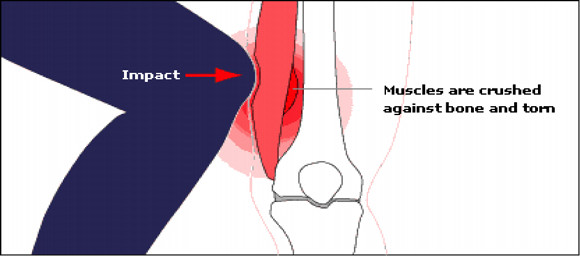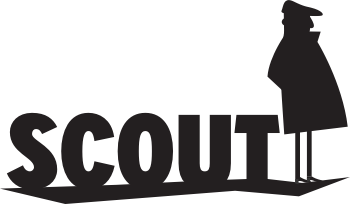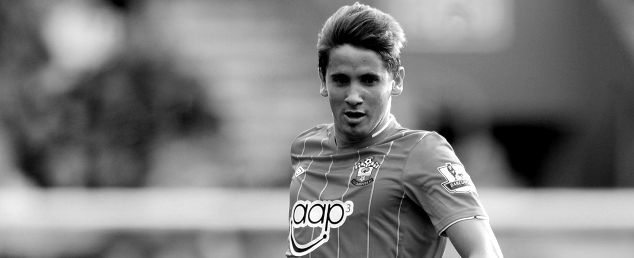This week on the virtual physio plinth, we turn our attentions to Quadriceps: Guy Demel sustains a strain against the Gunners whilst Gaston Ramirez ‘cops a corky’ in training.
Gaston Ramirez
Canny early adopters of the Fray Bentos born Gaston Ramirez were left looking for the nearest ‘pie-can’ to kick after news filtered through from Southampton of a potential six-week absence for their record summer signing.
Nigel Adkins described the injury as a serious “dead leg” proclaiming that:
“The muscle swelled up very much because there was nowhere for the blood to go, so there was a lot of pressure on his thigh…He has had to have a couple of days in hospital to try and relieve the pressure, so obviously he is not going to go and join the Uruguayan team over the international break.”
This type of injury is usually caused by a blunt trauma to the quadriceps. Often an opposing player’s knee sandwiches the Quadricep muscles between the Femur (thigh bone, see illustration below), resulting in a crush or compressive lesion, known as a Quadriceps Contusion/Haematoma, or, colloquially, as a ‘Dead-Leg,’ ‘Charley Horse,’ or ‘Corked Thigh/Corky.’ This category of injury commonly elicits bleeding, swelling and subsequent haematoma formation within the muscle.

The swelling the player reportedly suffered and his subsequent hospital treatment indicates a significant injury occurred, and also gives us a considerable clue to the type of contusion sustained.
There are two types; the first, termed Intra-Muscular, describes an injury to the muscle belly but the fascia or sheath that surrounds it remains undamaged. Here, the escaped blood and fluids are localised and pool in the muscle, unable to drain or change location due the fascia compartmentalising the leakage. The second type of contusion, Inter-Muscular describes damage to the muscle and to the fascia, here the bleeding takes longer to stop (due to decreased pressure) but the players recovery is often speedier as the fluids extravasate more efficiently. Thus, armed with Nigel Adkins’ summary we may infer that Ramirez suffered an Intra-Muscular Quadriceps haematoma/contusion.
The severity of the injury is indicated by its grading with grade 1 lesions reflecting minor tightness with little or no swelling; ‘niggles,’ that can sometimes be ‘run-off’ during a match. A grade 2 contusion would elicit a clearly presentable antalgic gait, with some swelling, pain on palpation and resisted contraction plus restricted range of movement at the knee joint, whilst a grade 3 indicates that ambulation will be severely restricted and crutches will usually be prescribed as an aid, the patient will be in severe pain and a static contraction would probably produce a bulge in the muscle. Grade 3 injuries have a rehabilitation time of anything from three to twelve weeks. Weighing up the available evidence, it would seem that Ramirez suffered a grade 3 intra-muscular quadriceps contusion, the most severe in both categories.
This is an interesting one for us physiotherapists. If certain modalities, such as heat and massage, are administered too early, or if treatment is too aggressive initially, a condition known as Myositis Ossificans (bone forming within the muscle) may develop, which is why swift action to drain the wound occurred. The Uruguayan’s initial rehabilitation will involve controlling the pain and swelling before flexibility and mobility work is undertaken. Once range of motion at the knee joint is nearing optimal, strength work will be introduced. For a grade 2 contusion the strength stage would take about a week to reach and a grade 3 possibly ten days but more likely two weeks from the date of injury.
In terms of a time-scale prognosis, minor, grade 1 quadriceps contusions may often be ‘run-off’ during a match or resolved within a week. Grade 2 injuries would require one to three weeks to dissipate, whilst grade 3 injuries may require anything from three to 12 weeks rehabilitation. Current reports suggest a six-week hiatus for the Saints’ starlet, however; Premier League football clubs have access to the best medics, facilities and treatments available.
There are a battery of modalities available to the physiotherapist to nurture optimal rehabilitation for this type of injury and highly trained athletes usually respond well to Quadricep contusions, which makes me think that six weeks is a little pessimistic and although three weeks is possible, perhaps a bit too optimistic, but I wouldn’t be surprised to see him back around the four week mark, which would see him remain absent for West Ham and Spurs but West Brom on November 5 becomes a distinct possibility. A state of affairs that brings Adam Lallana sharply into focus as the main fulcrum of creativity for the Saints.
Guy Demel
Reports suggest that popular Fantasy asset Guy Demel sustained an injury to the Quadricep group of muscles in his match against Arsenal last weekend, prompting Sam Allardyce to speculate…
“I think Guy Demel has pulled a thigh muscle and that could be four weeks”
The footage verifies this as we see a frustrated Demel being led from the pitch by the physio, his gait, indeed, inferring Quadricep involvement. However, encouragingly for owners, the Ivory Coast full-back is able to weight bear almost fully on the affected thigh as he walks to the dug-out and, although a limp was evident, it wasn’t overly pronounced and his movement suggested the injury, in my eyes, as not significantly serious.
The Quadriceps (translated as ‘four heads’) are a large group of four muscles covering the entire front of the thigh and are served by a voluminous blood supply and therefore heal quickly as long as there is no tendon involvement. Additionally, professional footballers have strong and heavily trained Quadricep muscles, which can also precipitate swift healing times. From the footage I feel Allardyce is being a little pessimistic and, in this instance, the International break has fallen kindly for Demel’s many Fantasy owners.
The latest news reports from the Ivory Coast suggest that Demel travelled with The Elephants squad this week to be assessed by their own medics. Although at this point his fitness is still unconfirmed, it does offer us further insight into the severity of the injury, again, inferring only a minor strain, which, barring complications, should see the Hammers full-back in contention for the visit of Southampton following the International sojourn.





12 years, 1 month agoWhat are Lambert owners doing? No Raminez may effect his output. Great 3rd striker option though moneywise.